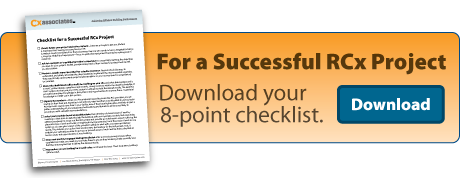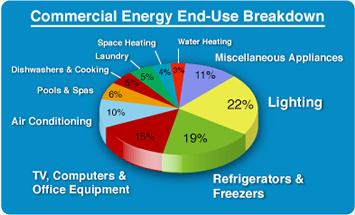Part 1: Performance Improvement and Proven Energy Savings
I recently presented at the NCBC conference in Hartford, Connecticut on the lessons we have learned from our retrocommissioning work. Retrocommissioning is a difficult process to predict, as existing systems and opportunities vary so widely depending on the equipment’s age and functional state, as well as the changes in loads since the building’s design. So while projects themselves differ in scope, size and outcome, the lessons we’ve learned about the process apply across the board. In this two-part blog post, I will discuss our experience with the performance improvements (proven benefits to the building) this week and my thoughts on the process next time.
Retrocommissioning - The Savings Claims Are Real
Vermont is rich with opportunity as there are many small-to-medium size commercial buildings with older HVAC and lighting systems that hold great opportunities for performance improvement and cost reduction. But claims are easy to make, so here is some proof:
Case Study #1
- Historic brick 4-story building built in 1800s.
- 20+ year old central plant with individual tenant heat pumps
Problem Statement:
- Failing control system
- Constant speed cooling tower and building loop pumps
- Manual diverter valve from building loop through boilers
Retrocommissioning Scope:
- Variable speed drives (VSDs) on cooling tower and main pumps
- Control valves on individual heat pumps
- Removal of manual boiler diverter valve
- Installation of boiler circulating pump
- Installation of Central Plant controls
The past year’s savings, as shown in the following graph, are 45% in heating energy, 30% in cooling energy and 31% in electrical costs. Real savings, being realized every day mainly due to variable frequency drives efficiently meeting the loads and not pumping excess water throughout the building.
Case Study #2
- 20+ year old central cooling/heating water plant
- 20+ year old air handling units
- Pneumatic controls
Problem Statement:
- Failing controls
- No onsite facilities staff
- High emergency maintenance costs
Retrocommissioning and Operational Performance Contract Scope:
- Partial DDC controls upgrade allowing:
- Control based on outside air temperature, reducing simultaneous heating and cooling
- Central plant occupied/unoccupied scheduling
- Alarm calls on major equipment
- Ongoing support to monitor HVAC system emergencies, maintenance and operation
Benefits:
- Annual 18% utility bill savings
- Early system failure identification through alarms
- Improved accountability of PM contractor
- Proactive detection of issues
According to the DOE “A typical commercial building could save 20% on its energy bills simply by commissioning existing systems so they operate as intended.” A typical commercial building is not complicated (it’s comprised of an envelope, HVAC systems and lighting) and we already expect buildings operate “as intended,” yet there is 20% savings to be had? That’s a lot of money on an owner’s bottom line, let alone for the country as a whole! Powering commercial buildings costs more than $200 billion each year; they consume nearly 20% of all of the energy used in the United Sates. Saving 20% of this cost is $40 billion per year.
Retrocommissioning Lessons from the Field
Our experience, as shown above, is that these savings are real and the projects are not complicated, nor are the technologies experimental. The technologies are straightforward and savings are attainable in any building that hasn’t been commissioned in a few years. The potential is staggering!








